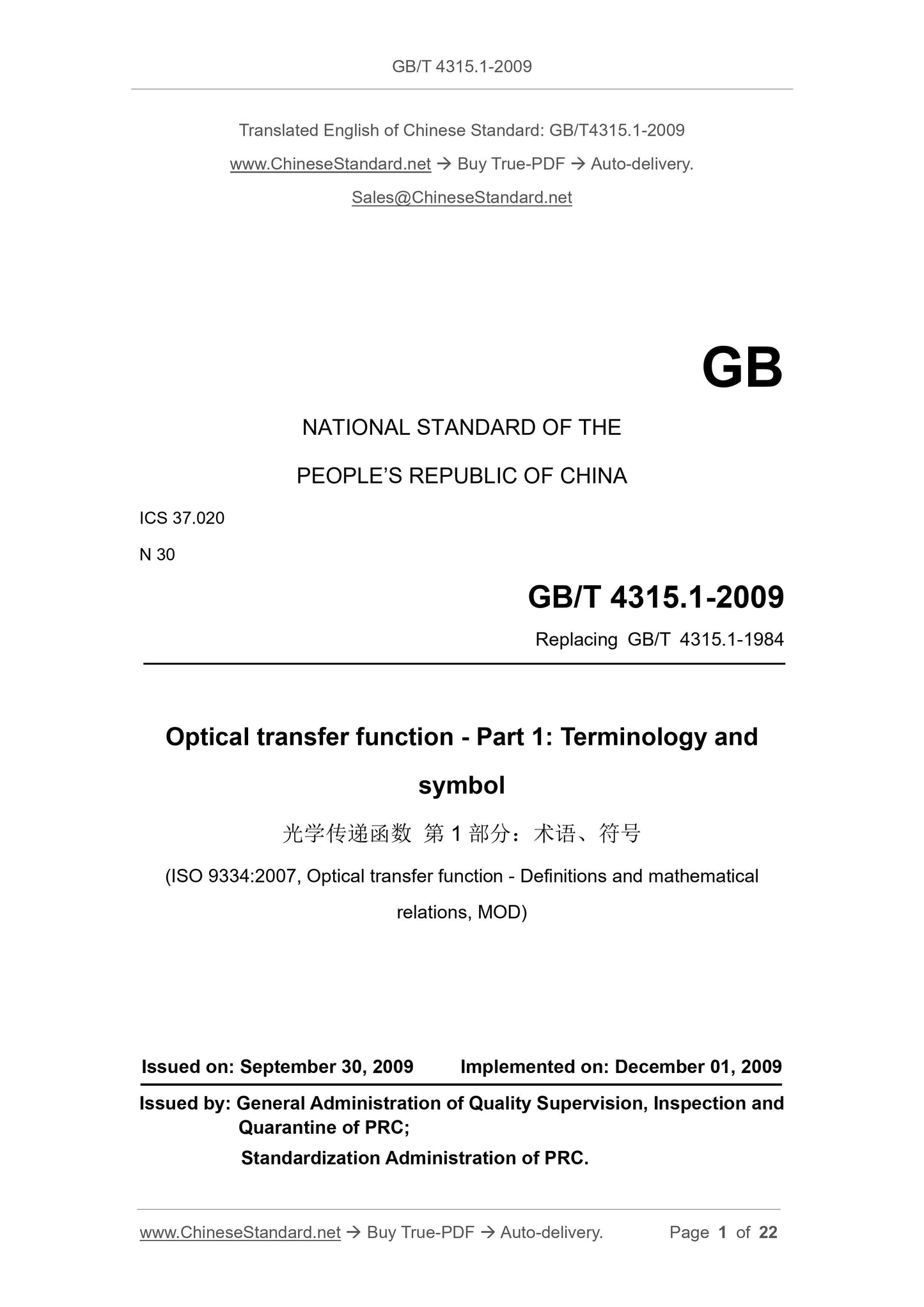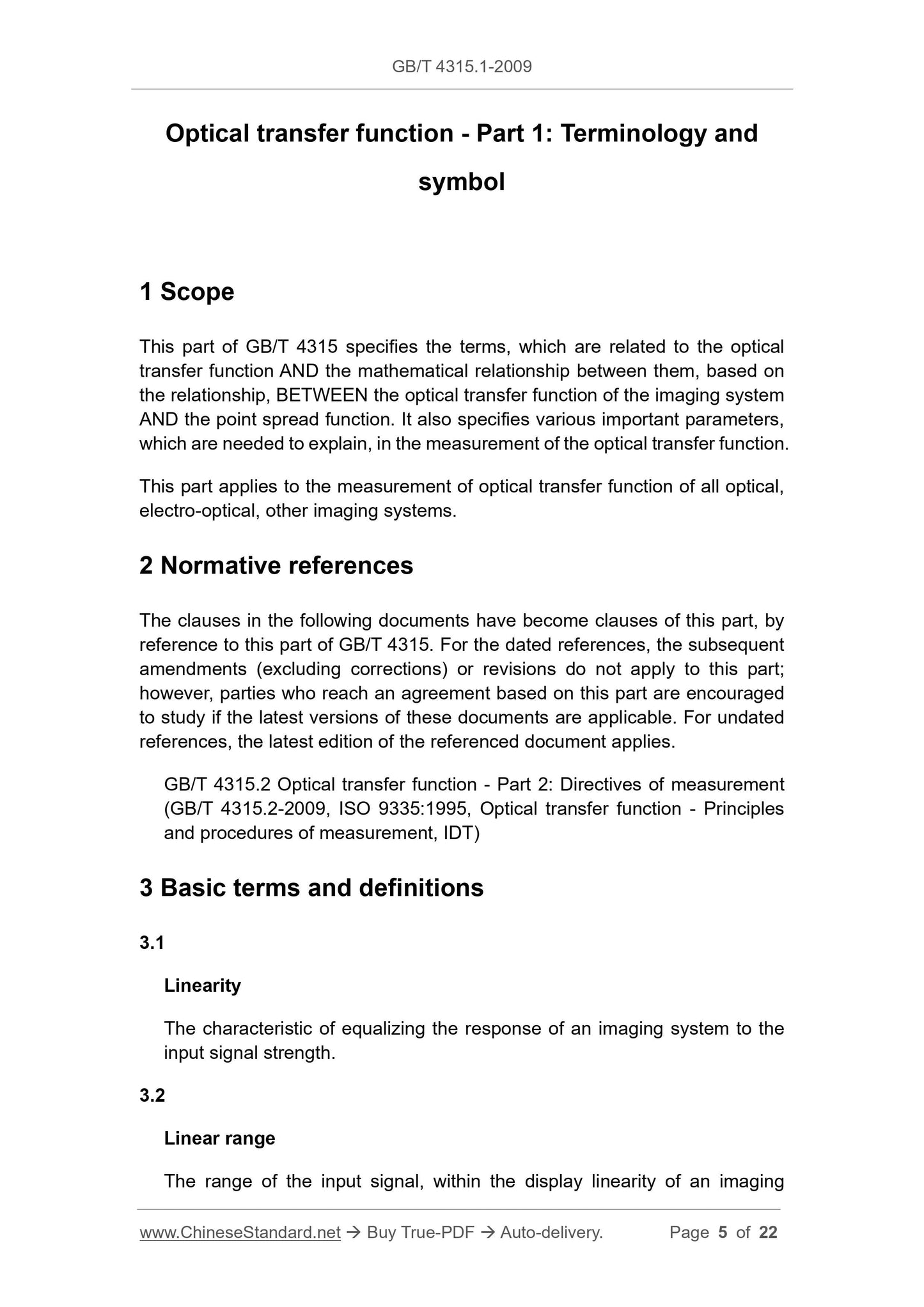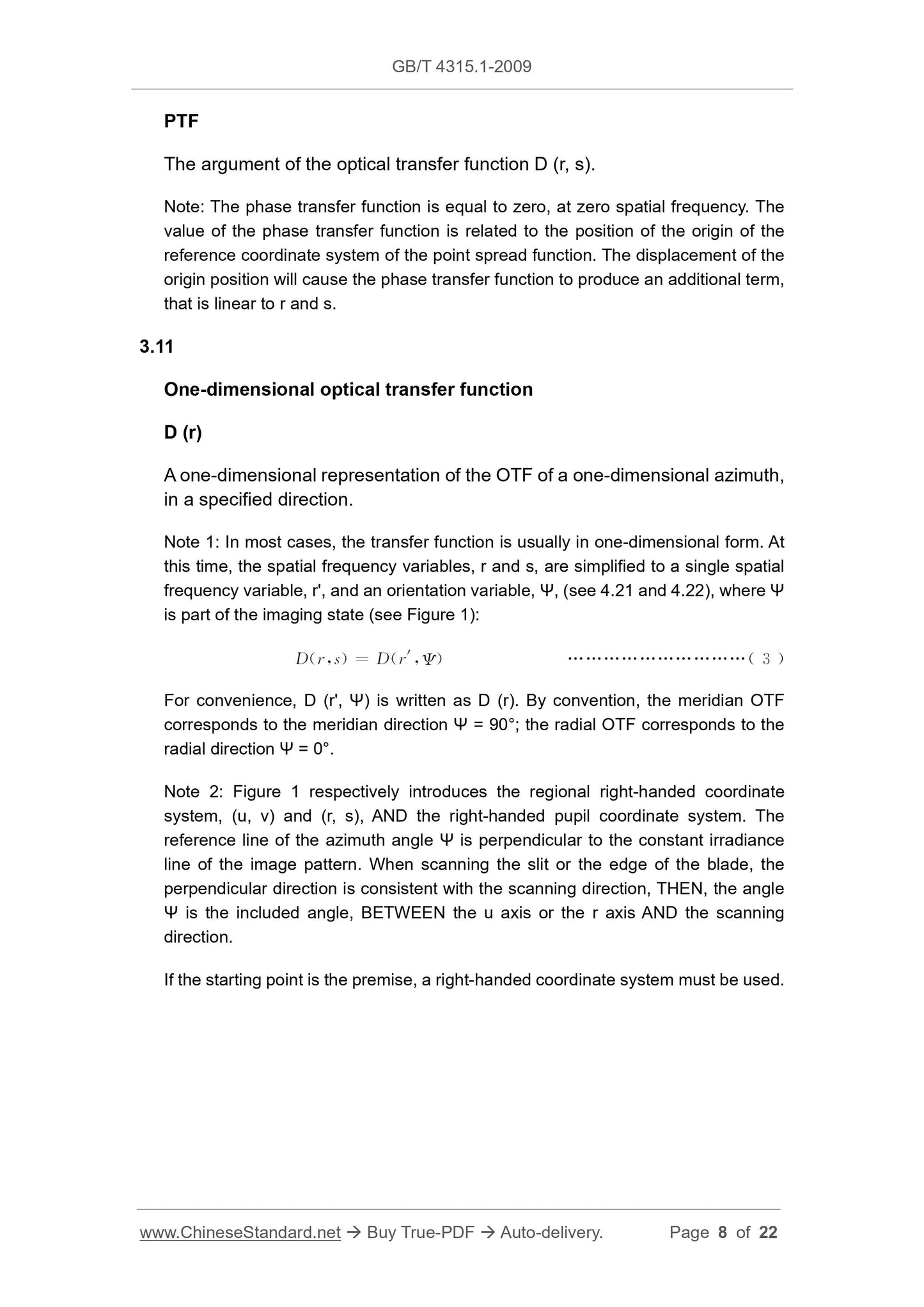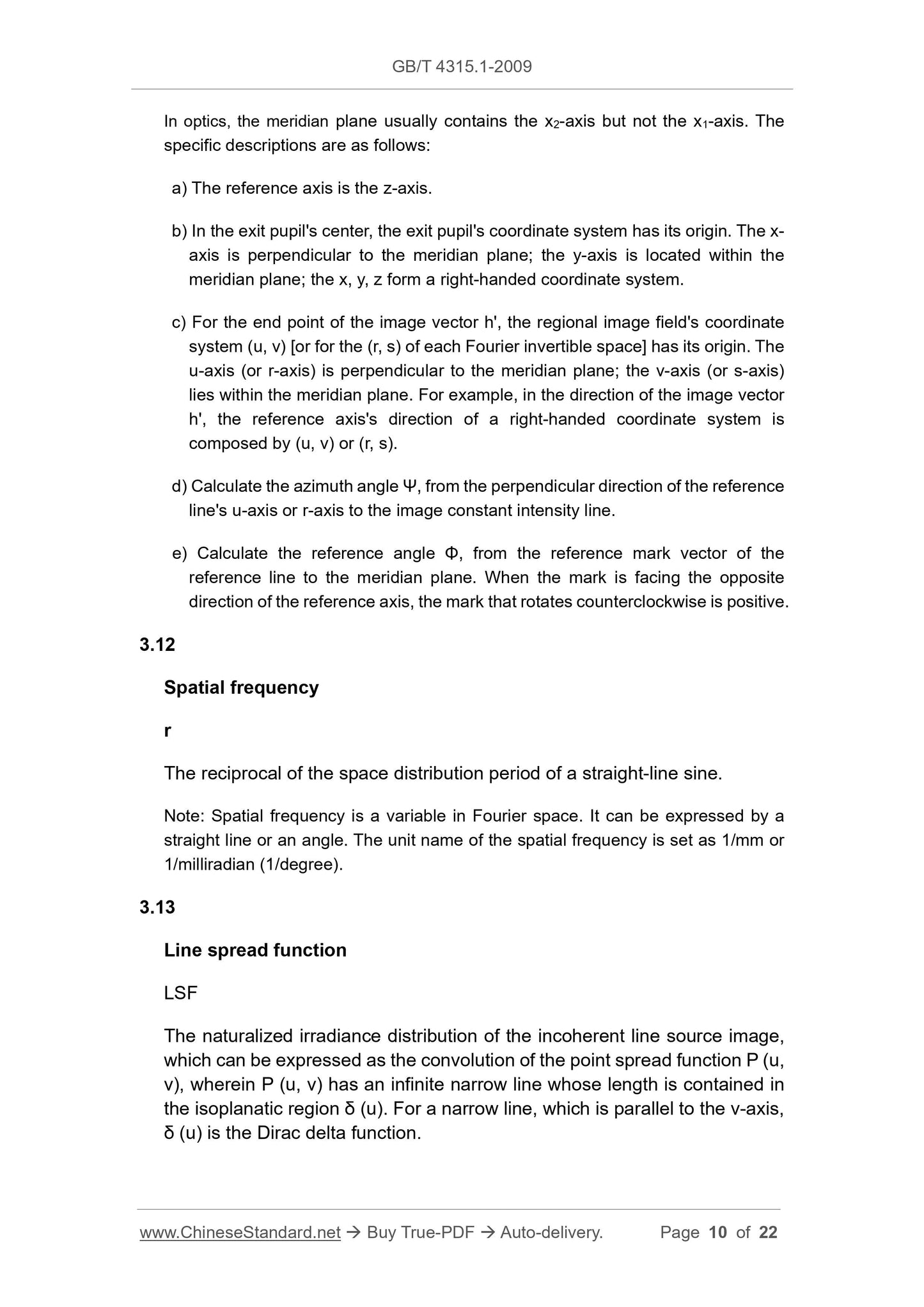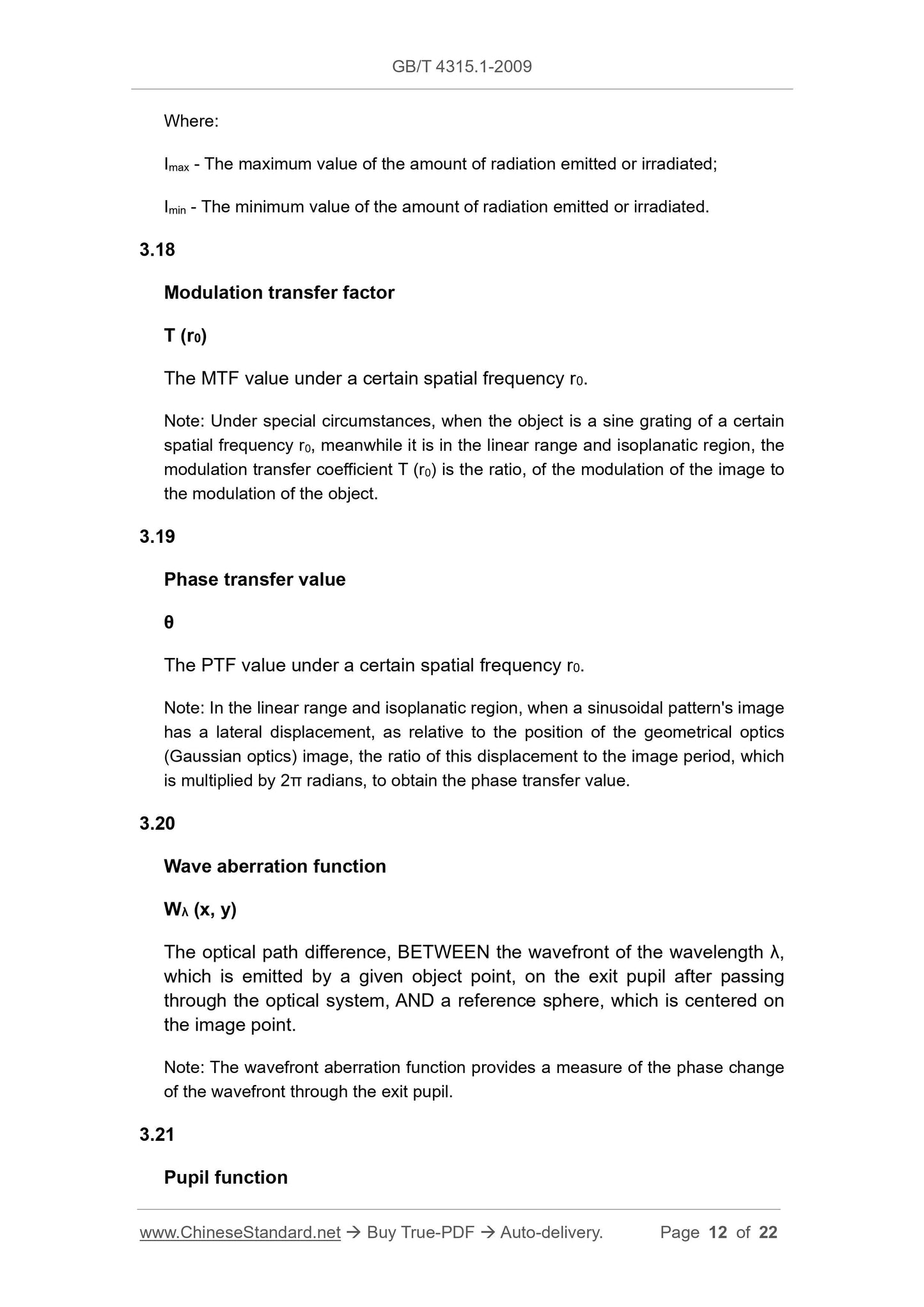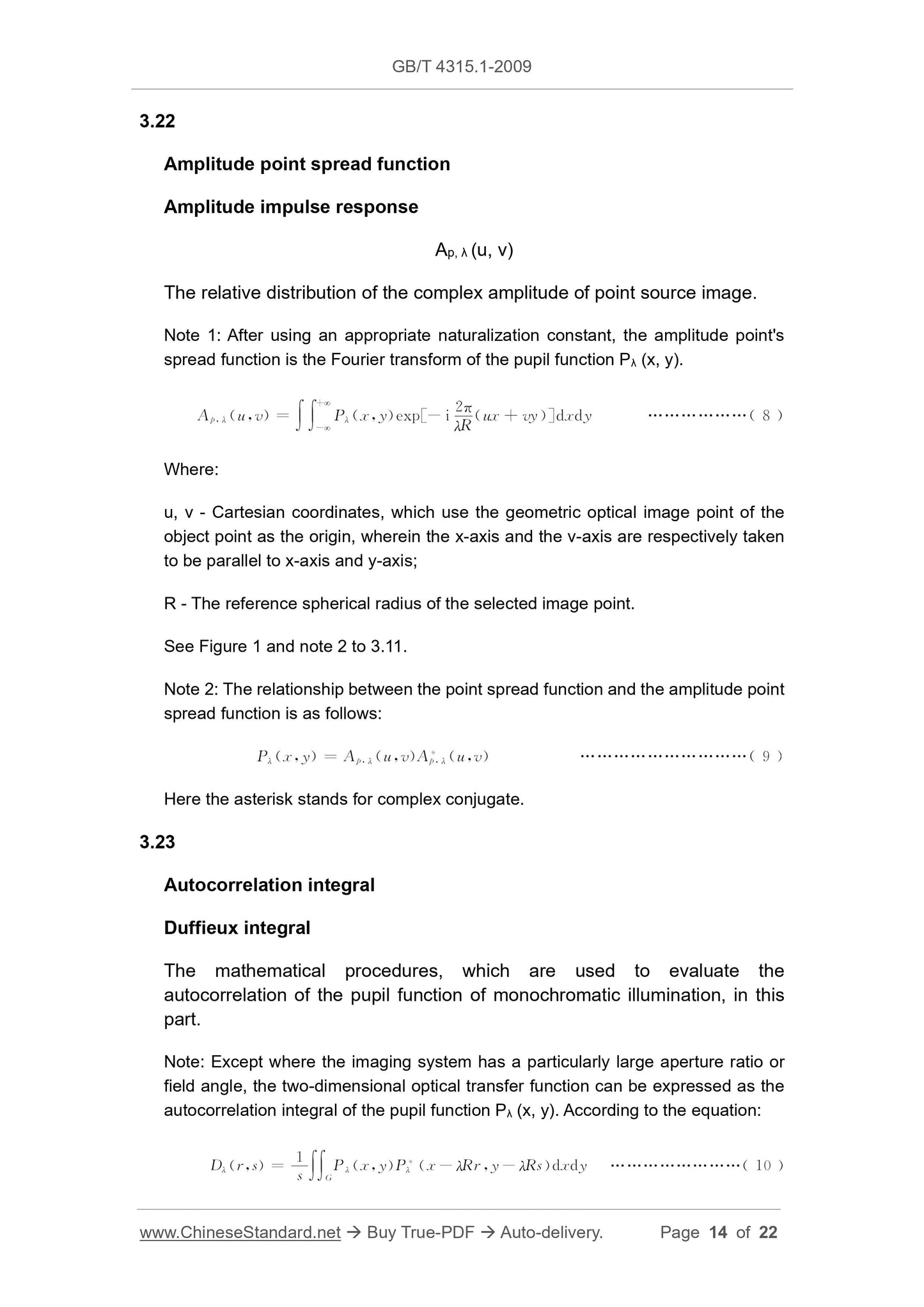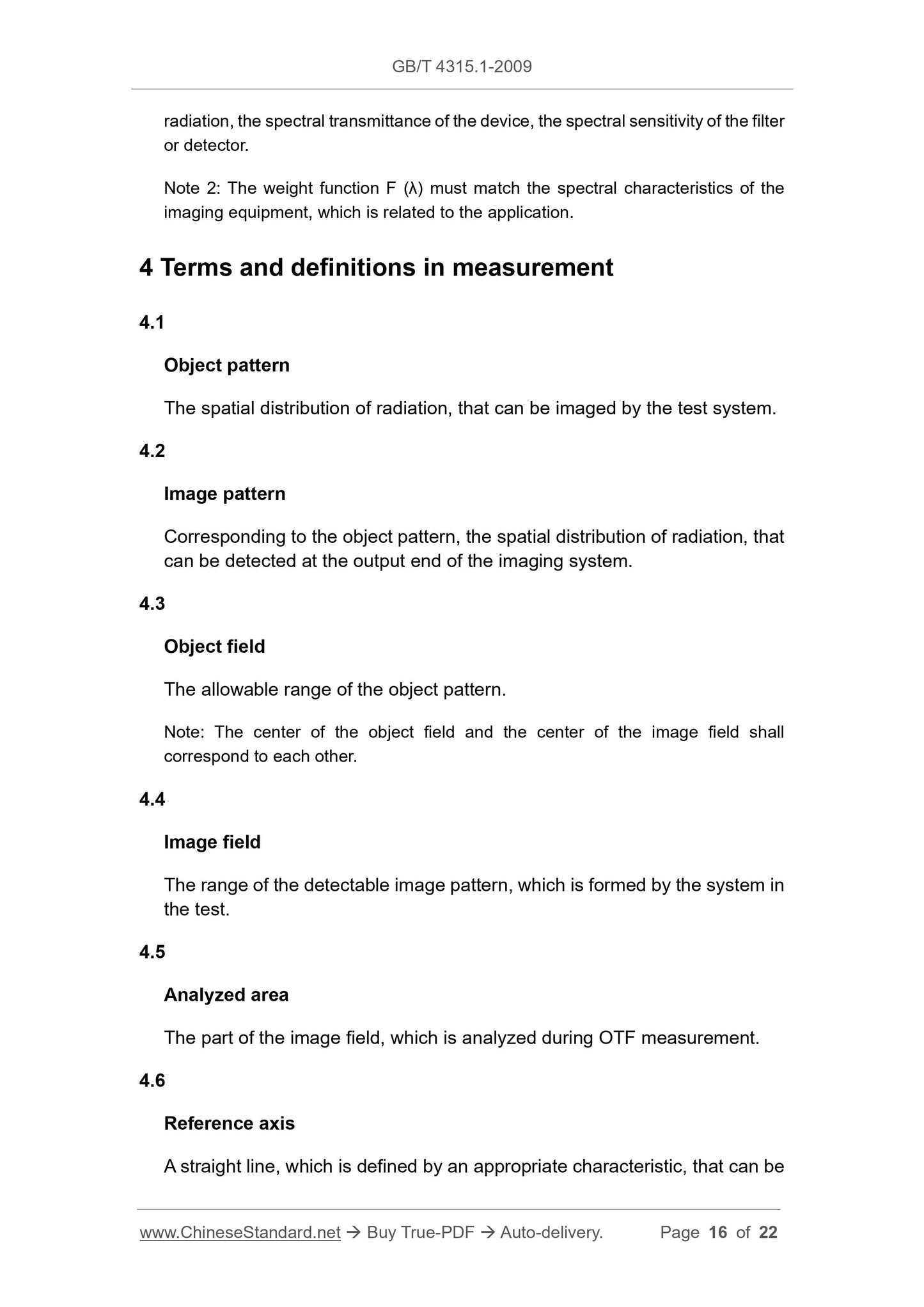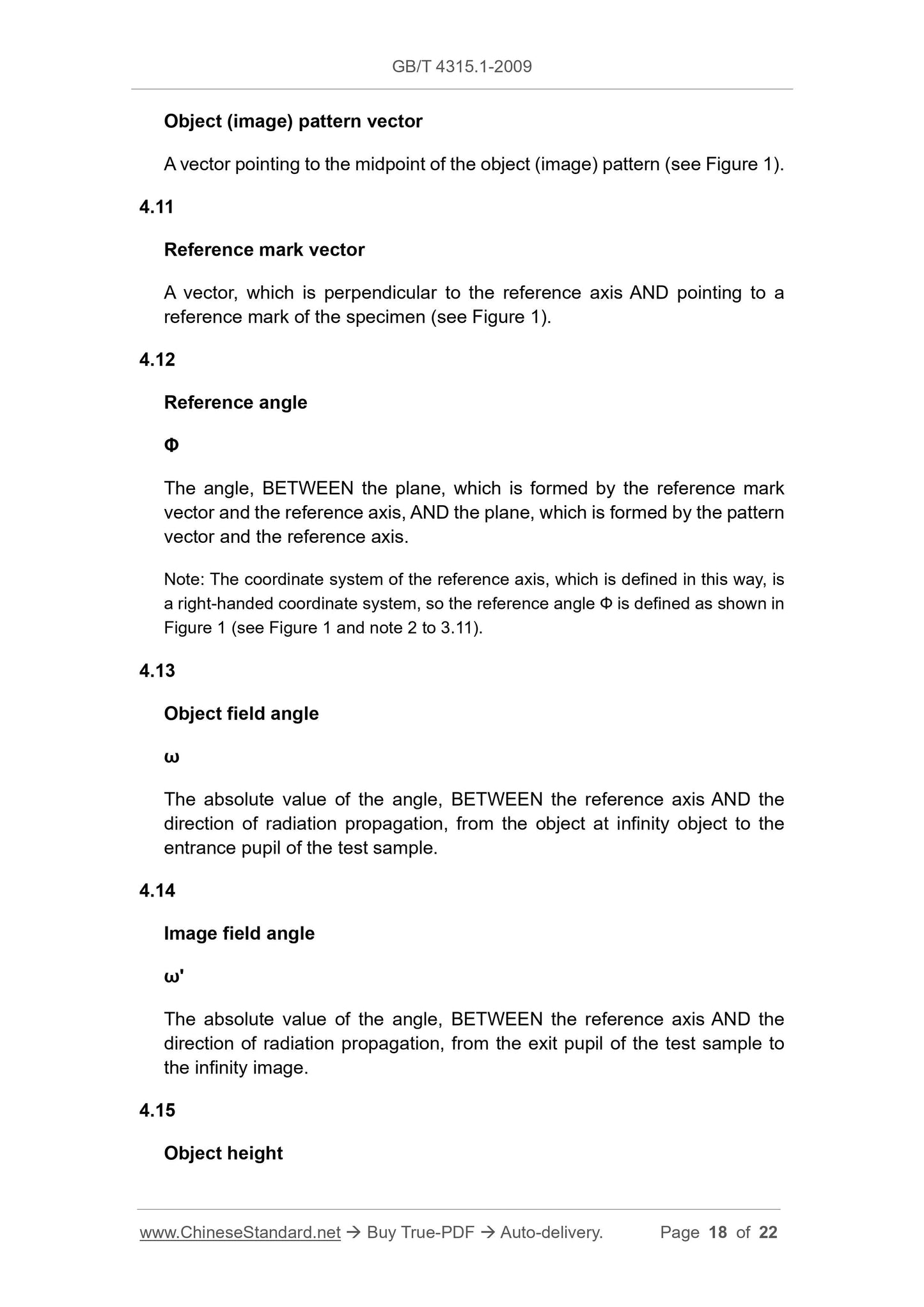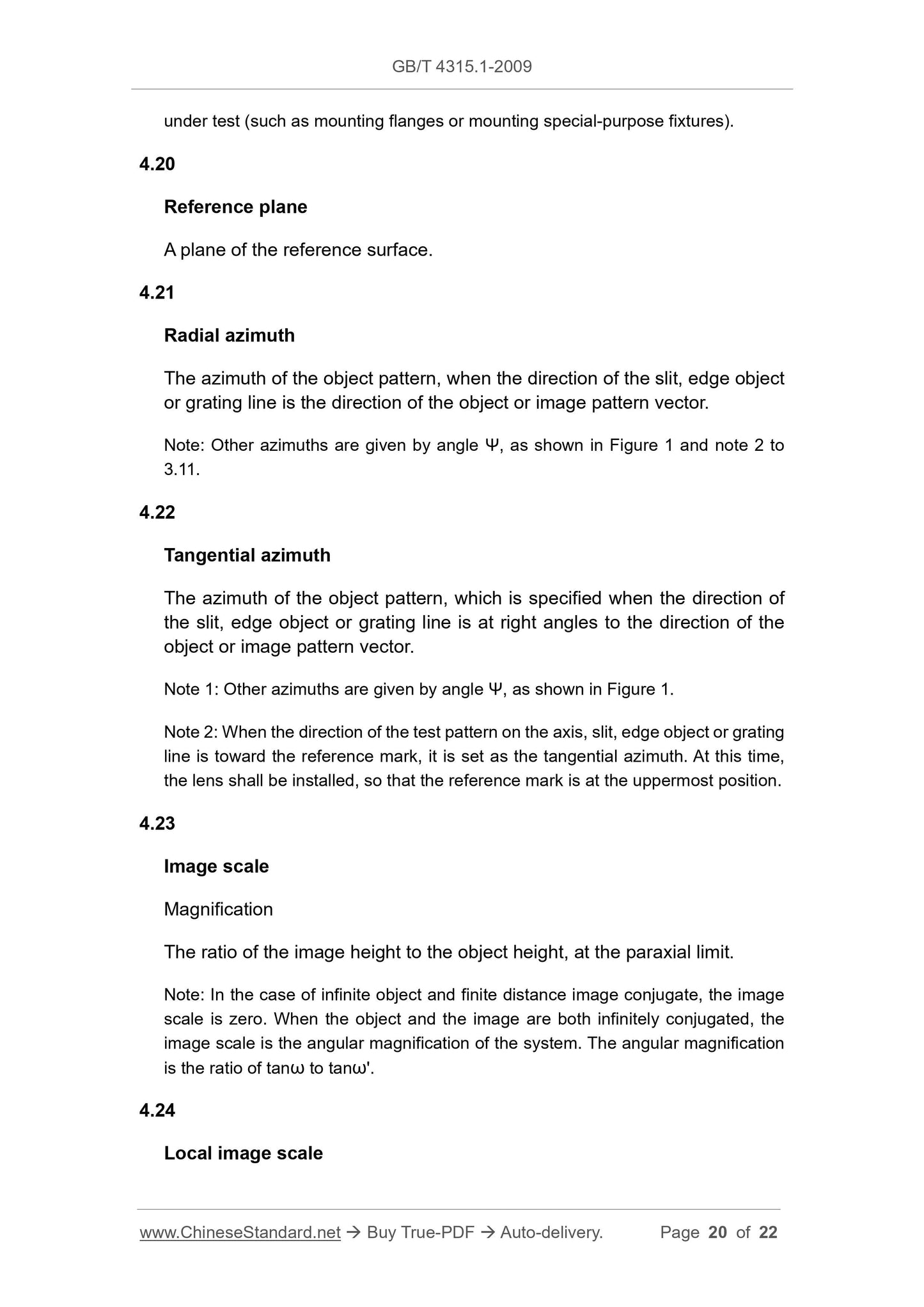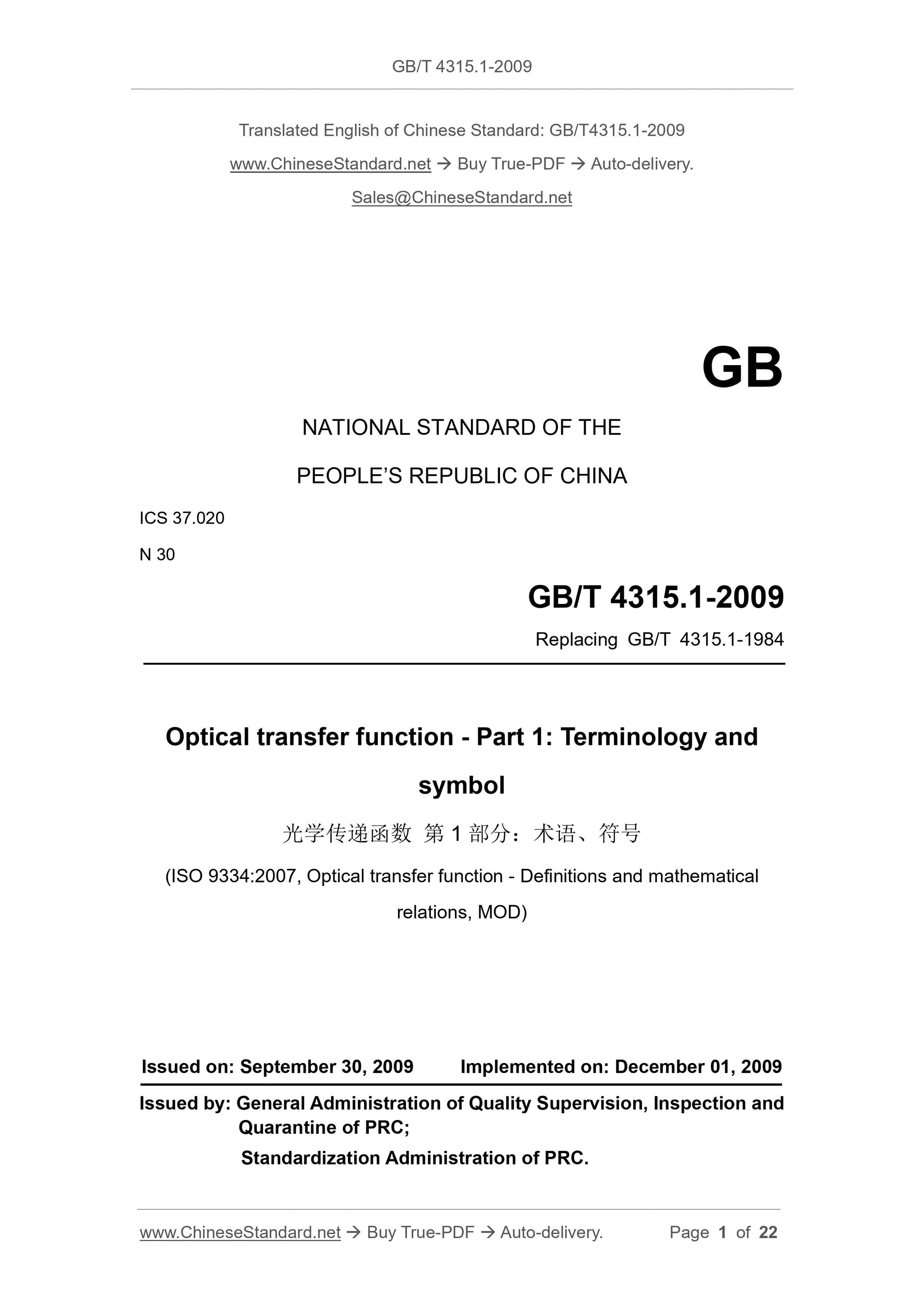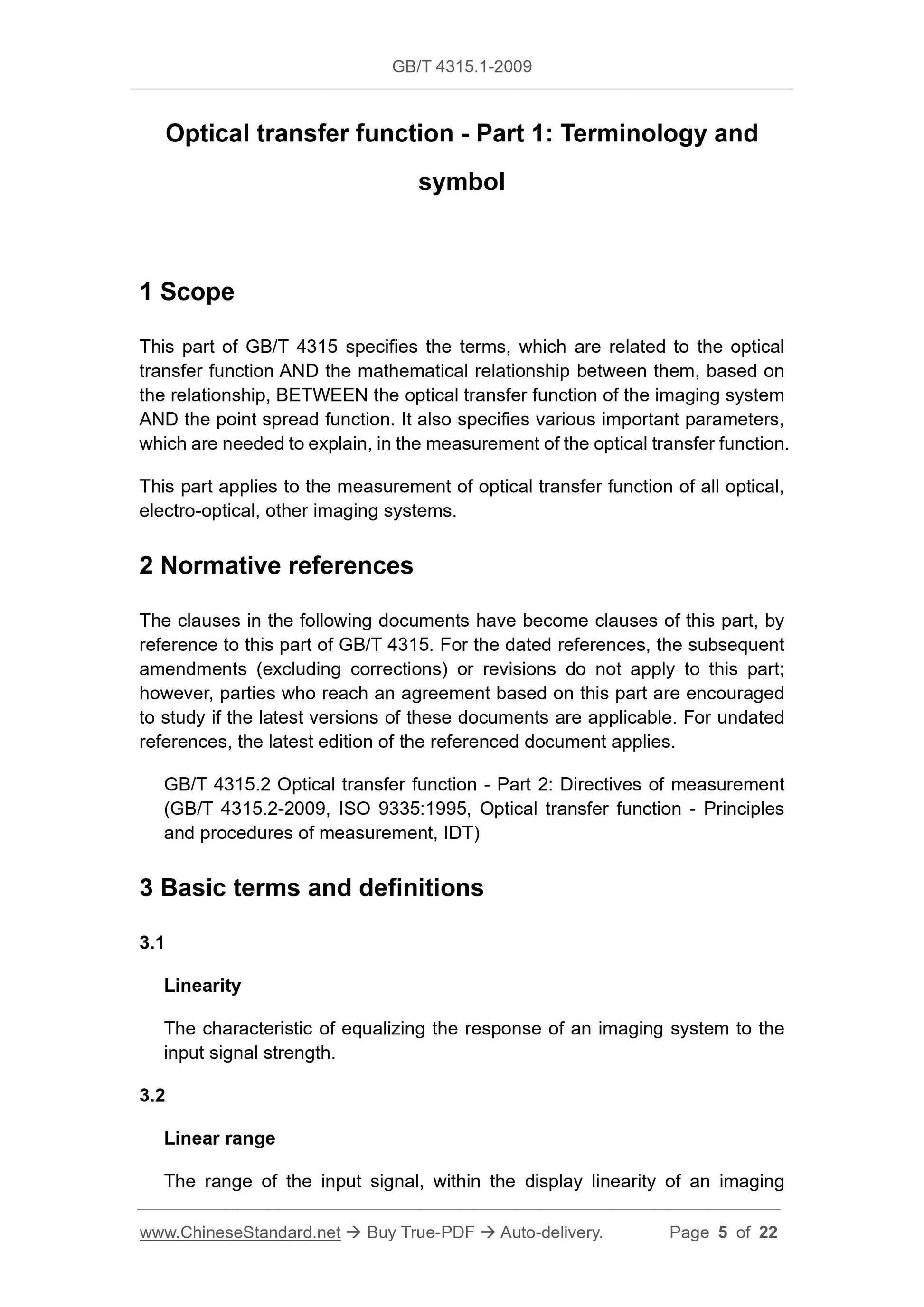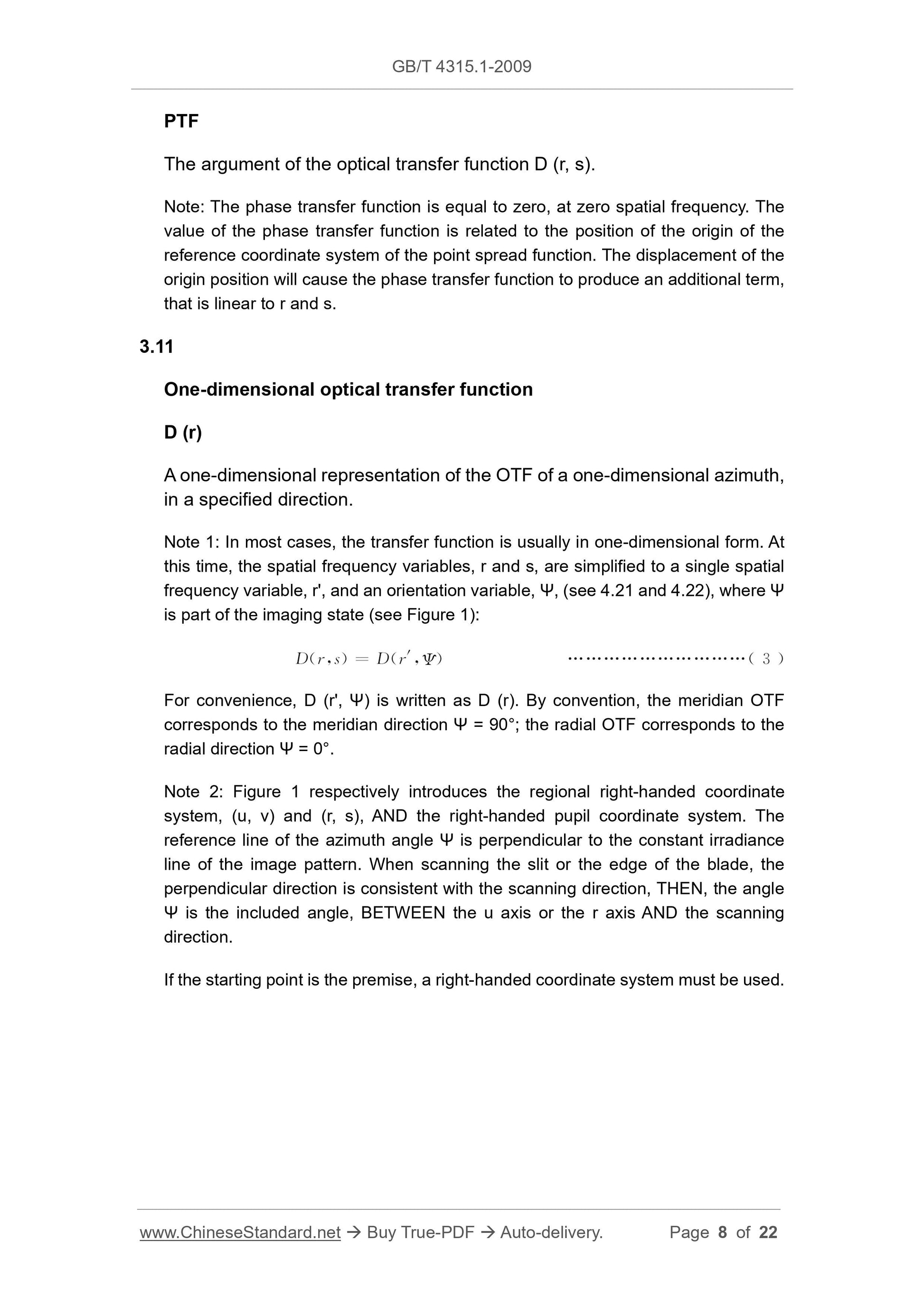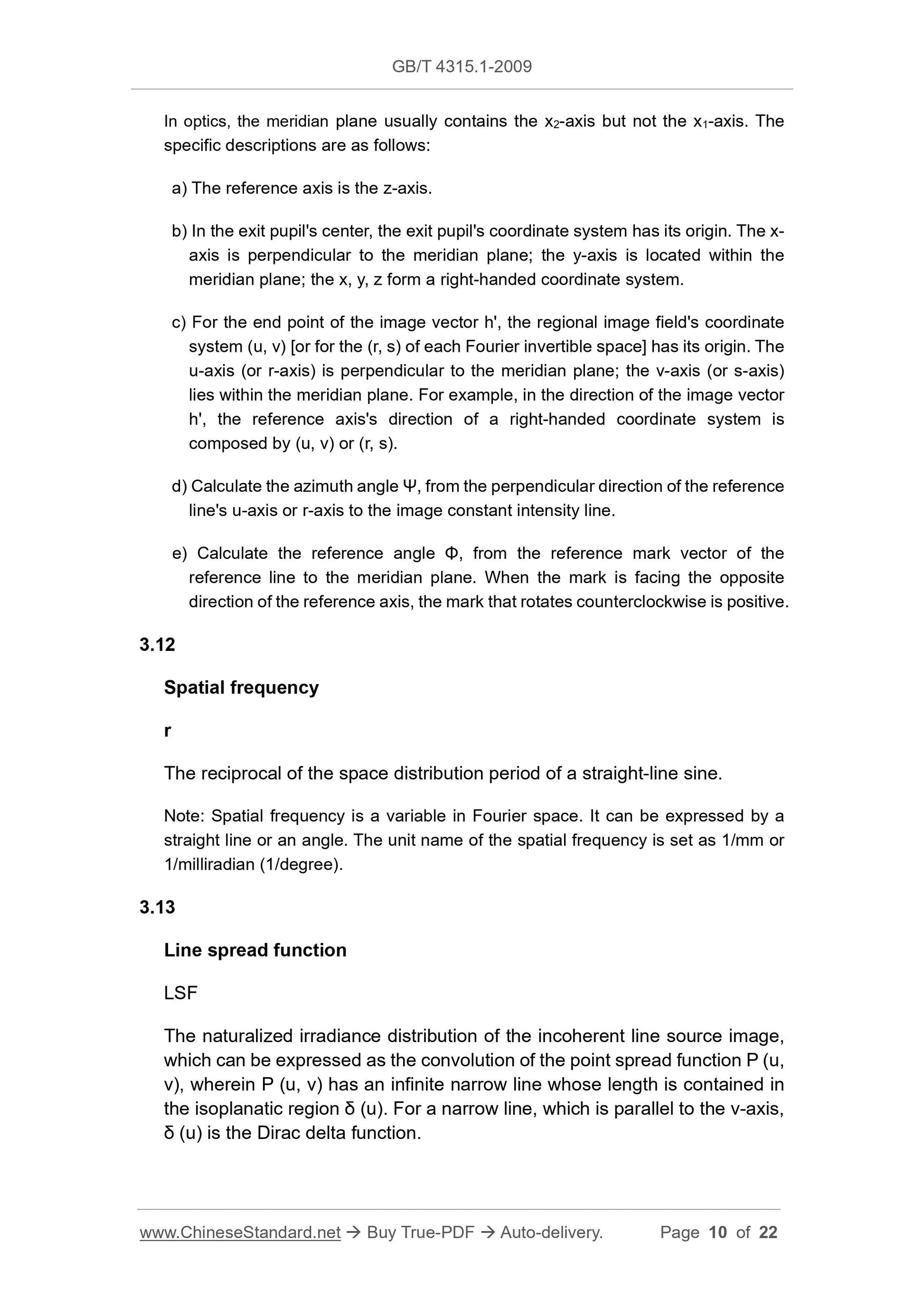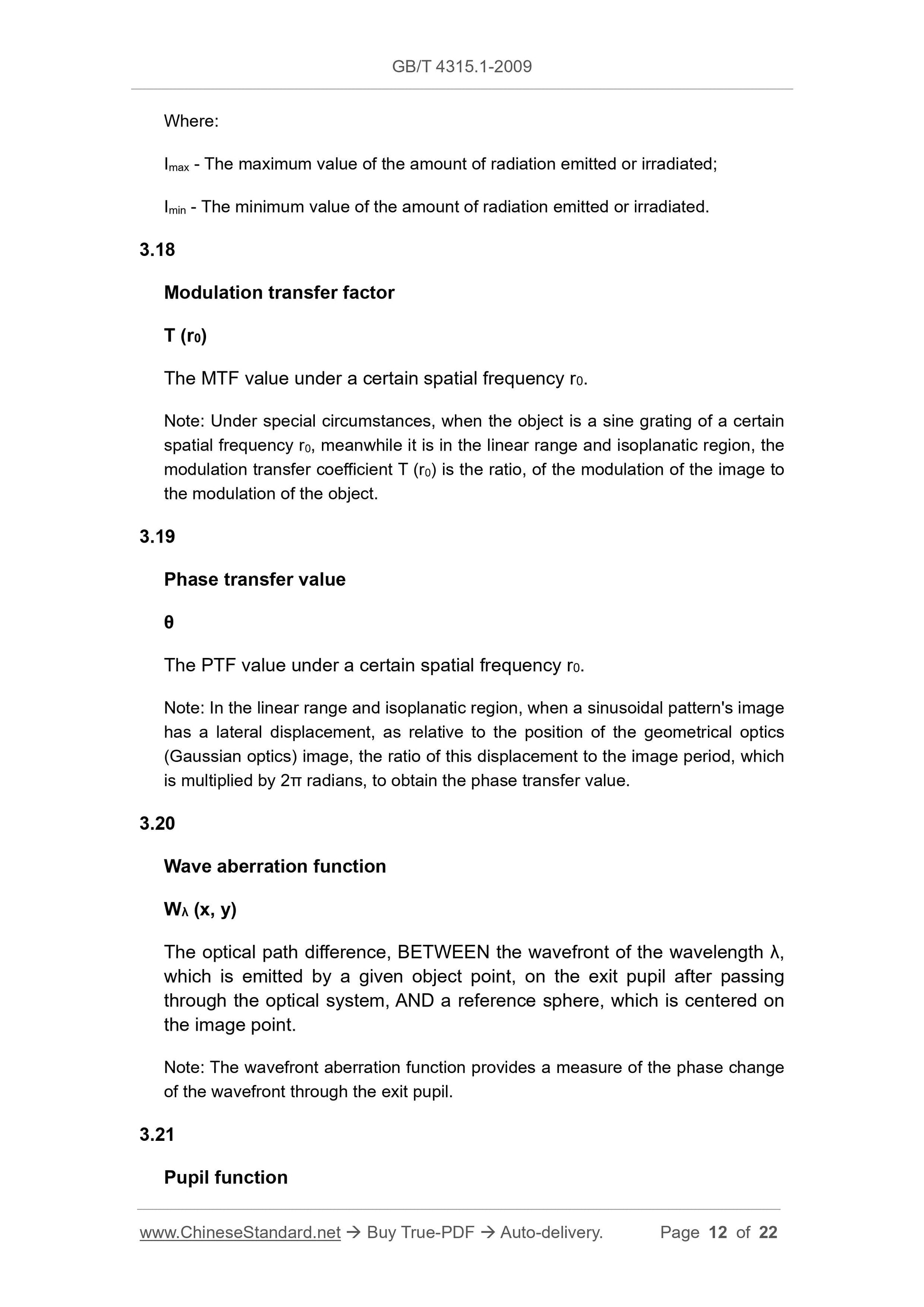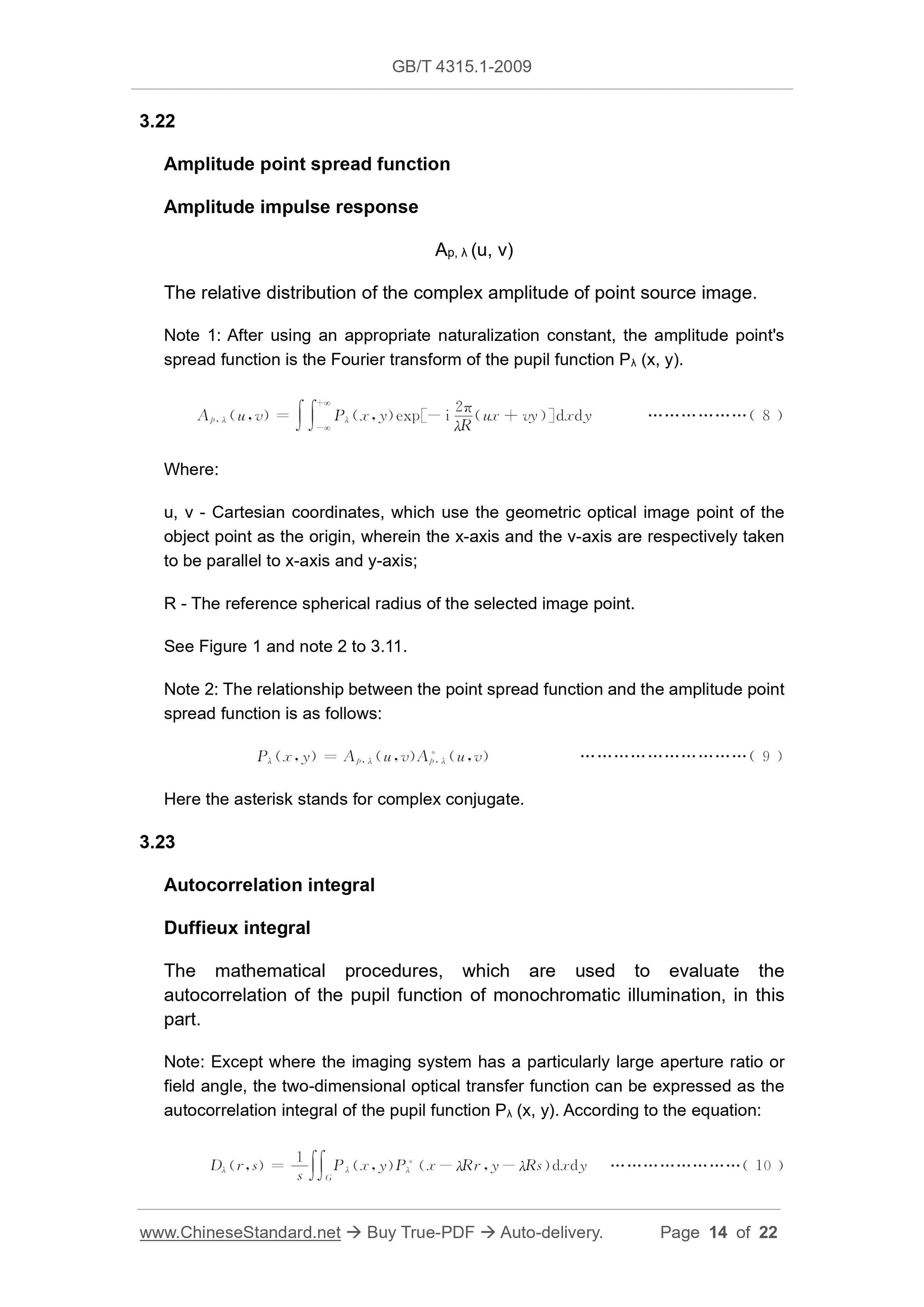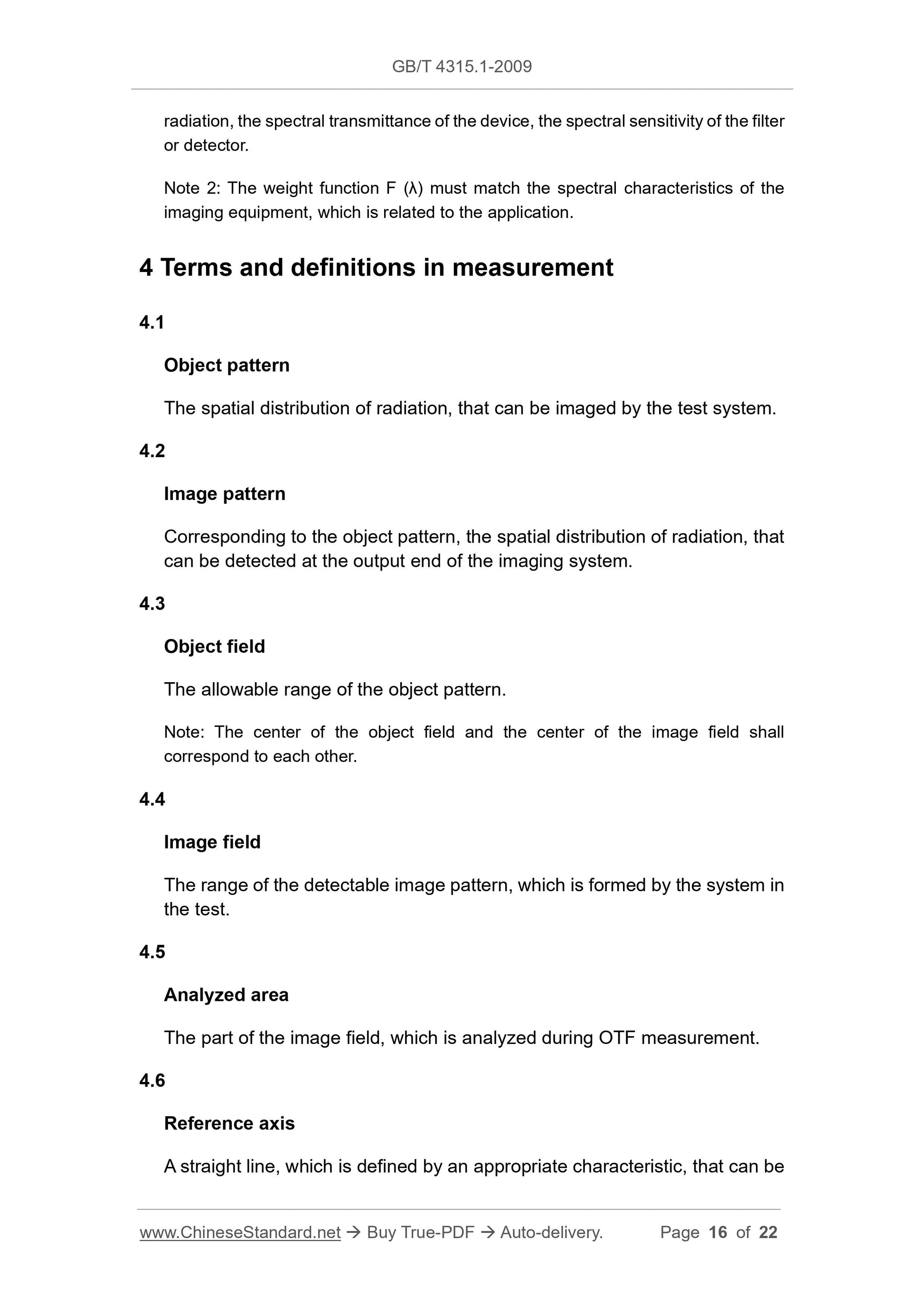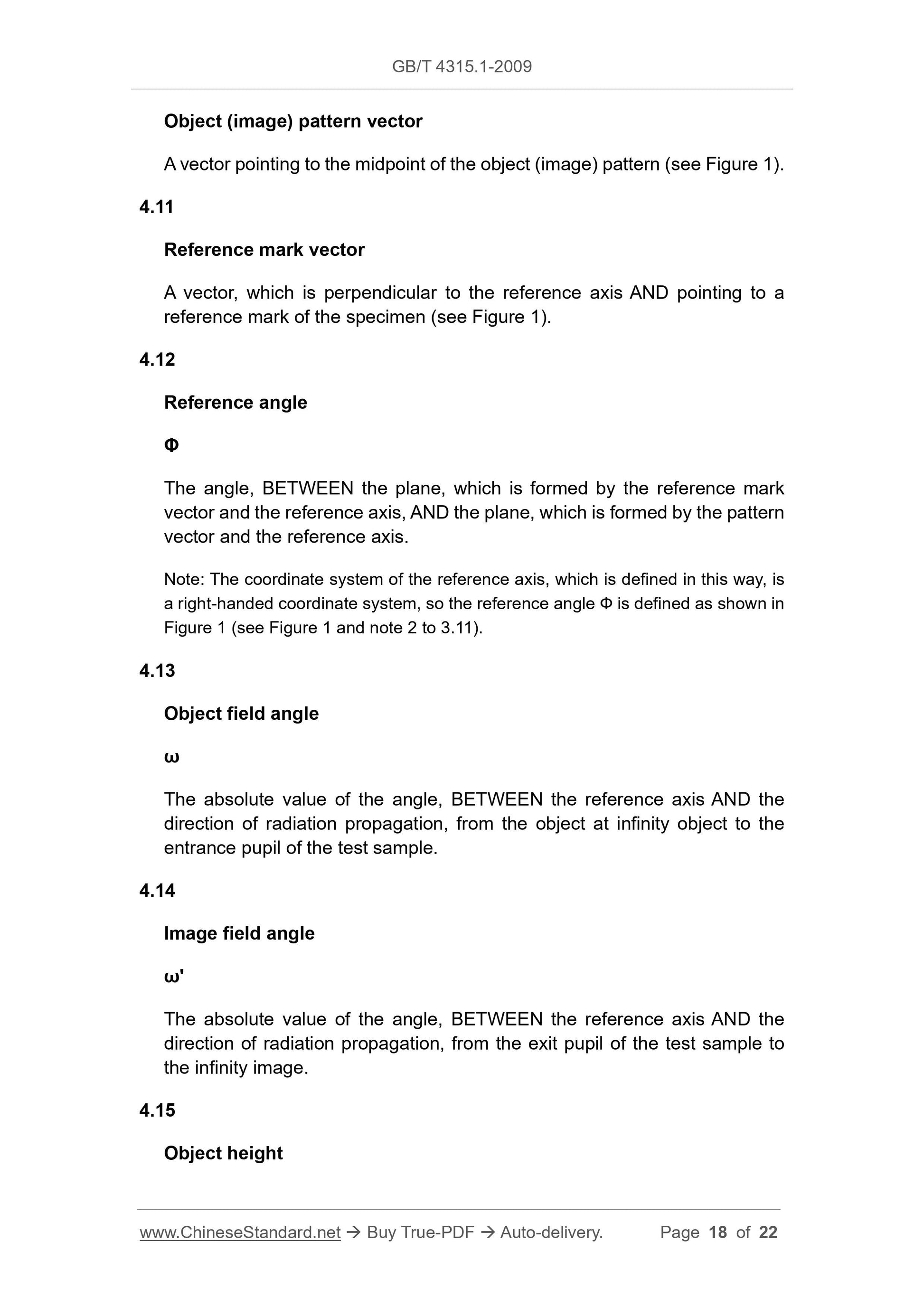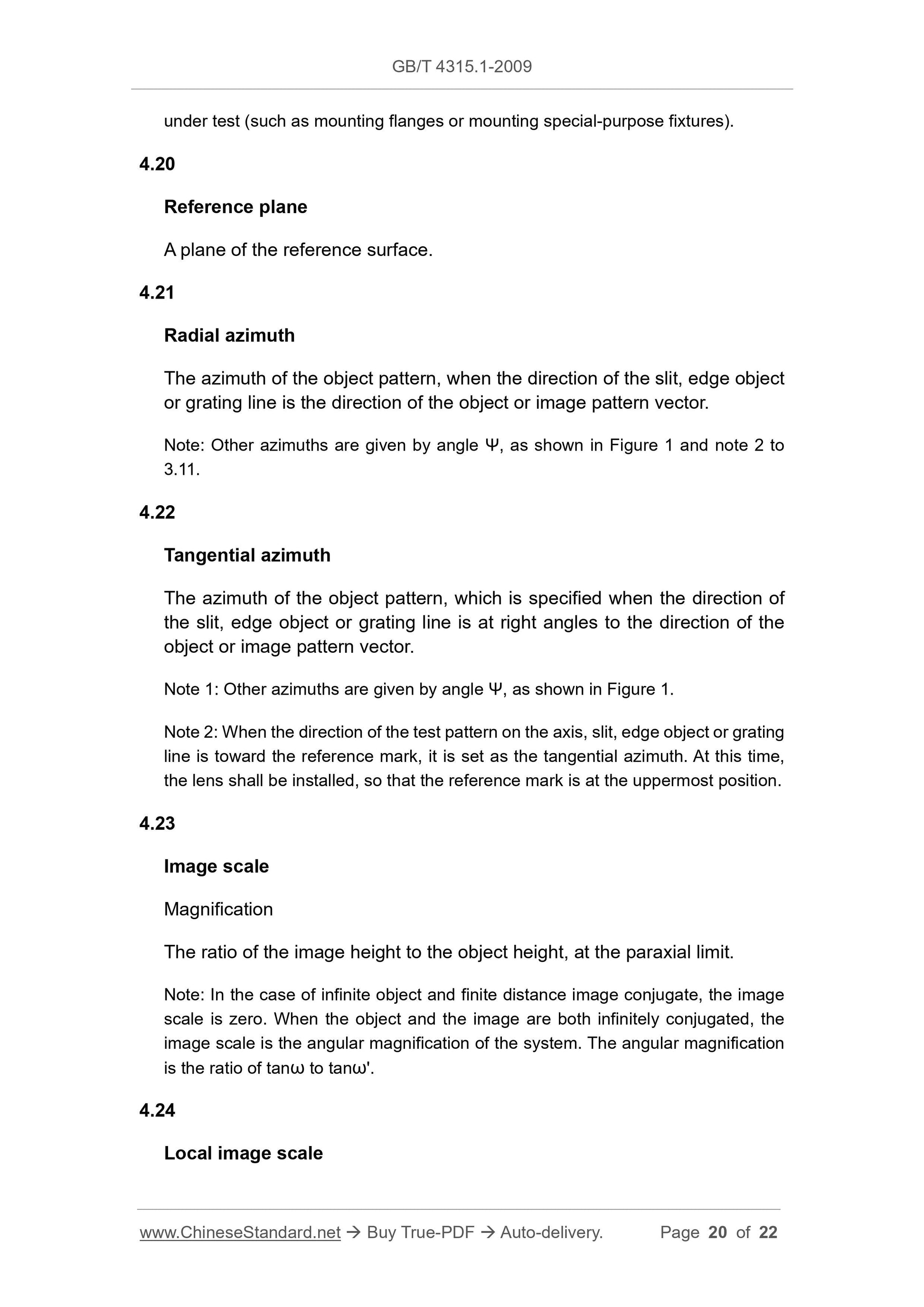1
/
of
10
www.ChineseStandard.us -- Field Test Asia Pte. Ltd.
GB/T 4315.1-2009 English PDF (GB/T4315.1-2009)
GB/T 4315.1-2009 English PDF (GB/T4315.1-2009)
Regular price
$250.00
Regular price
Sale price
$250.00
Unit price
/
per
Shipping calculated at checkout.
Couldn't load pickup availability
GB/T 4315.1-2009: Optical transfer function -- Part 1: Terminology and symbol
Delivery: 9 seconds. Download (and Email) true-PDF + Invoice.Get Quotation: Click GB/T 4315.1-2009 (Self-service in 1-minute)
Newer / historical versions: GB/T 4315.1-2009
Preview True-PDF
Scope
This part of GB/T 4315 specifies the terms, which are related to the opticaltransfer function AND the mathematical relationship between them, based on
the relationship, BETWEEN the optical transfer function of the imaging system
AND the point spread function. It also specifies various important parameters,
which are needed to explain, in the measurement of the optical transfer function.
This part applies to the measurement of optical transfer function of all optical,
electro-optical, other imaging systems.
Basic Data
| Standard ID | GB/T 4315.1-2009 (GB/T4315.1-2009) |
| Description (Translated English) | Optical transfer function -- Part 1: Terminology and symbol |
| Sector / Industry | National Standard (Recommended) |
| Classification of Chinese Standard | N30 |
| Classification of International Standard | 37.020 |
| Word Count Estimation | 15,13 |
| Date of Issue | 2009-09-30 |
| Date of Implementation | 2009-12-01 |
| Older Standard (superseded by this standard) | GB/T 4315.1-1984 |
| Quoted Standard | GB/T 4315.2 |
| Adopted Standard | ISO 9334-2007, MOD |
| Regulation (derived from) | Announcement of Newly Approved National Standards No. 10 of 2009 (No. 150 overall) |
| Issuing agency(ies) | General Administration of Quality Supervision, Inspection and Quarantine of the People's Republic of China, Standardization Administration of the People's Republic of China |
| Summary | This standard specifies imaging system and the point spread function of the optical transfer function of the relationship between the optical transfer function defines the terms and mathematical relationship between them, but also provides a measurement of the optical transfer function to be described in each of the important parameters. This section applies to all optical, electro-optical imaging systems, and other optical transfer function measurement. |
Share
